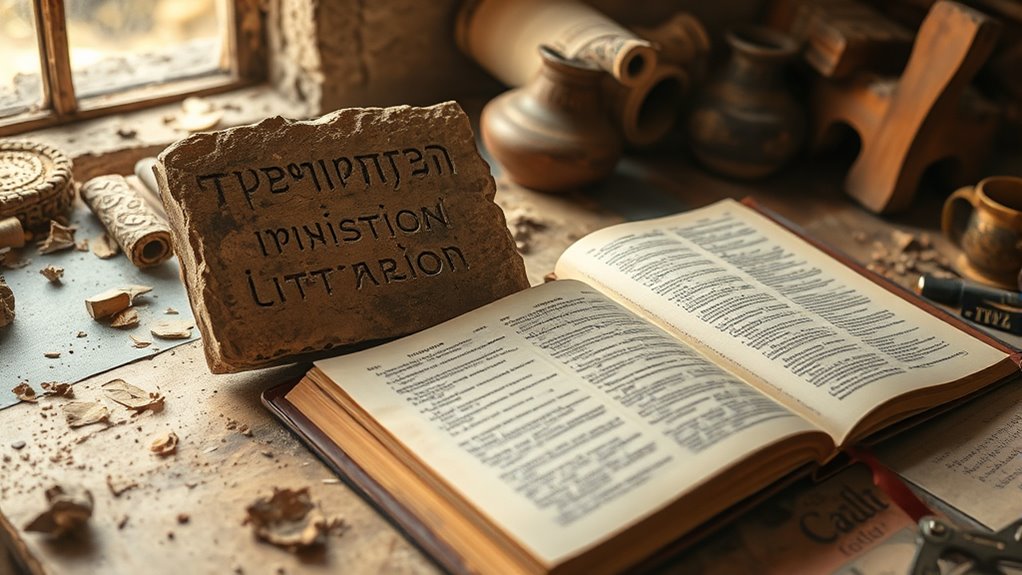The Bible is considered historically reliable because archaeological discoveries, ancient inscriptions, and external writings support many of its events, figures, and places. Cultural influences, supernatural accounts, and literary traditions also provide context that explains how these stories were understood in their time. While some challenges exist in dating manuscripts, ongoing discoveries strengthen the Bible’s credibility. If you want to explore how these pieces fit together, there’s more to uncover beyond what you’ve seen so far.
Key Takeaways
- Archaeological discoveries, like the Tel Dan Stele and Pool of Siloam, confirm biblical events and figures, supporting historical reliability.
- External sources such as Josephus and Tacitus corroborate biblical accounts, providing independent validation.
- Cultural influences from neighboring ancient civilizations are reflected in biblical texts, indicating historical context and authenticity.
- Manuscript evidence, including the Dead Sea Scrolls, shows textual consistency and preserves biblical integrity over time.
- Miracles and supernatural events, rooted in the worldview of ancient societies, were seen as signs of divine authority, lending credibility within their cultural framework.
Historical Context of Biblical Texts
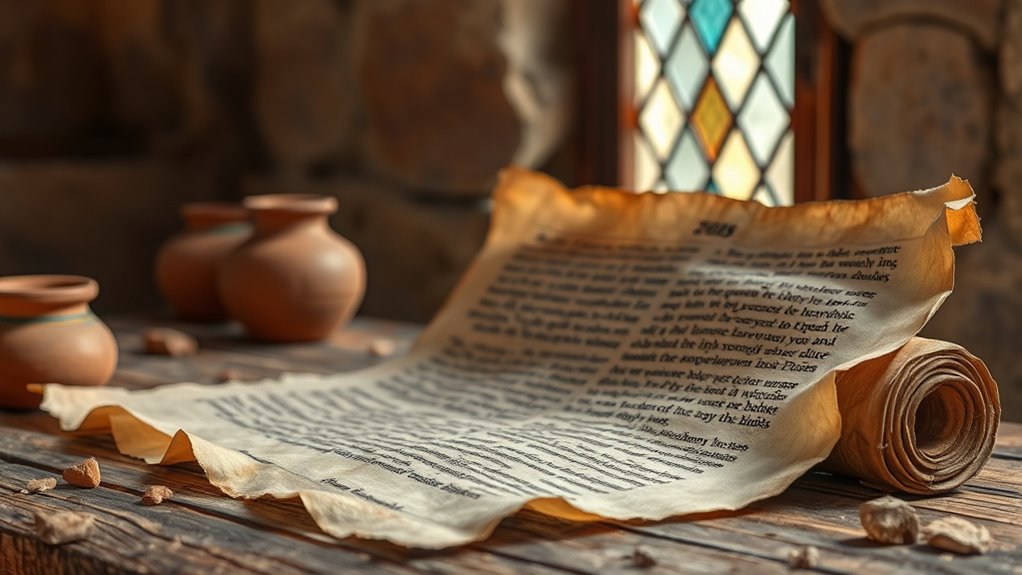
Have you ever wondered how the historical setting of biblical texts influences their accuracy? Ancient inscriptions and artifacts reveal the cultural influences shaping these writings. They offer glimpses into the societies, languages, and customs of the time, helping you understand the context behind biblical events. Recognizing the influence of neighboring cultures, such as the Egyptians, Babylonians, and Persians, shows how ideas and practices merged into biblical narratives. These inscriptions serve as external confirmation, supporting the historical backdrop of biblical stories. When you consider the cultural influences reflected in ancient inscriptions, it becomes easier to see how the biblical authors were shaped by their environment, lending credibility to their accounts within the historical framework of their era.
Archaeological Evidence Supporting Biblical Events
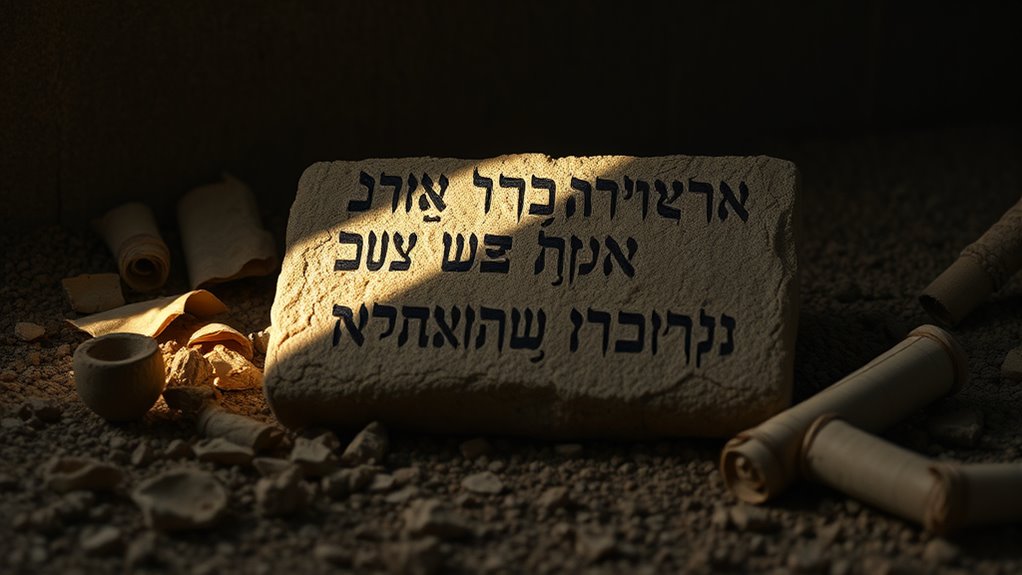
Archaeological discoveries provide tangible evidence that corroborates many biblical events, lending historical credibility to the texts. Ancient inscriptions have confirmed key moments, such as the existence of King David and the existence of the Pool of Siloam. Biblical artifacts, like seals, pottery, and inscriptions, align with descriptions in Scripture, supporting the historical setting. For example, the Tel Dan Stele contains an inscription referencing the “House of David,” validating biblical references to David’s dynasty. Similarly, the discovery of the Moabite Stone supports stories from the Old Testament. These artifacts and inscriptions serve as physical proof that biblical narratives are rooted in real history, bolstering confidence in the Bible’s authenticity as a historical document.
Challenges in Dating and Authenticating Manuscripts

You face the challenge of pinpointing the exact age of biblical manuscripts with limited methods. Techniques like radiocarbon dating help, but they often have margins of error that complicate certainty. Additionally, authenticating the texts’ origins is difficult due to potential forgeries and textual alterations over time.
Manuscript Dating Techniques
How can experts accurately determine the age of ancient manuscripts when numerous factors complicate the process? Manuscript preservation plays a vital role in dating methodologies, but challenges remain. To improve accuracy, specialists use:
- Radiocarbon dating, which measures decay in organic materials.
- Paleography, analyzing handwriting styles to estimate time periods.
- Material analysis, examining ink and parchment composition.
- Contextual clues, like historical references or provenance.
Each method has limitations, especially when manuscripts have been restored or contaminated. Combining multiple techniques helps verify dates and authenticate manuscripts more reliably. However, uncertainties still exist due to degradation over time and inconsistent preservation conditions. This makes precise dating a complex puzzle, but advances continue to refine our understanding of ancient texts.
Textual Authentication Challenges
While techniques like radiocarbon dating and paleography help establish approximate ages, authenticating manuscripts involves complex challenges beyond just determining their age. One major issue is deciphering cipher texts or encrypted writings, which can obscure original meanings and complicate authentication. Additionally, translation accuracy plays a vital role; over centuries, scribes may have introduced errors or altered texts, making it difficult to verify original content. Variations between manuscripts, such as omissions or insertions, further hinder establishing a definitive version. These factors create hurdles in confirming a manuscript’s authenticity and evaluating its historical reliability. Ultimately, authentication demands careful analysis of textual variations, decipherment efforts, and comparisons, highlighting that dating alone doesn’t guarantee the manuscript’s integrity or original meaning.
The Role of External Historical Sources

External historical sources play a crucial role in evaluating the reliability of biblical accounts. They provide independent evidence that supports or challenges biblical narratives. When examining ancient manuscripts, you look for historical corroboration from outside sources. This process helps verify events, locations, and figures mentioned in the Bible. To understand their significance, consider:
External sources help verify biblical events and figures through independent evidence and archaeological findings.
- Comparing biblical texts with inscriptions and artifacts from the same period.
- Cross-referencing accounts from other ancient civilizations.
- Analyzing archaeological discoveries that match biblical descriptions.
- Using writings from historians like Josephus or Tacitus for confirmation.
These external sources strengthen the case for the Bible’s historical reliability, offering context and validation beyond biblical texts alone. They help you piece together a more complete picture of ancient history.
Miracles and Supernatural Accounts: Historical Considerations

You need to contemplate whether miracles recorded in the Bible can be historically credible and how eyewitness testimonies support or challenge these accounts. It’s also important to examine the cultural context of supernatural events and how that influences their interpretation. Understanding these points helps assess the reliability of these extraordinary claims within their historical setting.
Historical Credibility of Miracles
The historical credibility of miracles and supernatural accounts is a complex issue that challenges skeptics and believers alike. When evaluating miraculous authenticity, you should consider the quality of historical documentation supporting these events. Here are four key points:
- Many biblical miracles are documented in multiple ancient sources, lending credibility.
- Archaeological findings sometimes corroborate details in miracle stories.
- The consistency of accounts across different texts suggests intentional preservation.
- Despite skepticism, some miracles have remained unchallenged in their historical context.
While these points bolster the case for their historical credibility, it’s essential to examine each event critically. The strength of historical documentation plays a vital role in assessing whether miracles truly reflect supernatural intervention or are historical fabrications.
Eyewitness Testimony Validity
Eyewitness testimony forms a essential foundation for evaluating the authenticity of miracles and supernatural accounts. When considering biblical events, your assessment hinges on eyewitness reliability and the accuracy of their testimony. Historically, human memory can be fallible, influenced by bias or external factors, which raises questions about testimony accuracy. However, many biblical accounts contain consistent details across multiple sources, strengthening their credibility. Additionally, cultural and contextual factors can impact how eyewitnesses perceive events, but this doesn’t necessarily diminish their reliability. To determine if supernatural accounts are credible, you must weigh the consistency of testimonies and consider the potential for human error. While eyewitness accounts are crucial, understanding their limitations helps clarify the historical reliability of miracle reports.
Cultural Context of Supernatural
Understanding the cultural environment in which biblical miracles occurred is essential for interpreting their significance and credibility. During those times, supernatural phenomena were deeply woven into everyday life and cultural beliefs. To grasp this context, consider these key points:
- Supernatural accounts reflected the worldview of ancient societies, where gods and spirits influenced daily life.
- Miracles were seen as signs of divine authority, confirming a prophet’s or leader’s legitimacy.
- Cultural beliefs shaped perceptions, making supernatural events more believable within that framework.
- Recognizing these beliefs helps you avoid dismissing biblical accounts as mere legends, understanding their role within the cultural fabric of the time.
Consistency and Contradictions Within the Scriptures
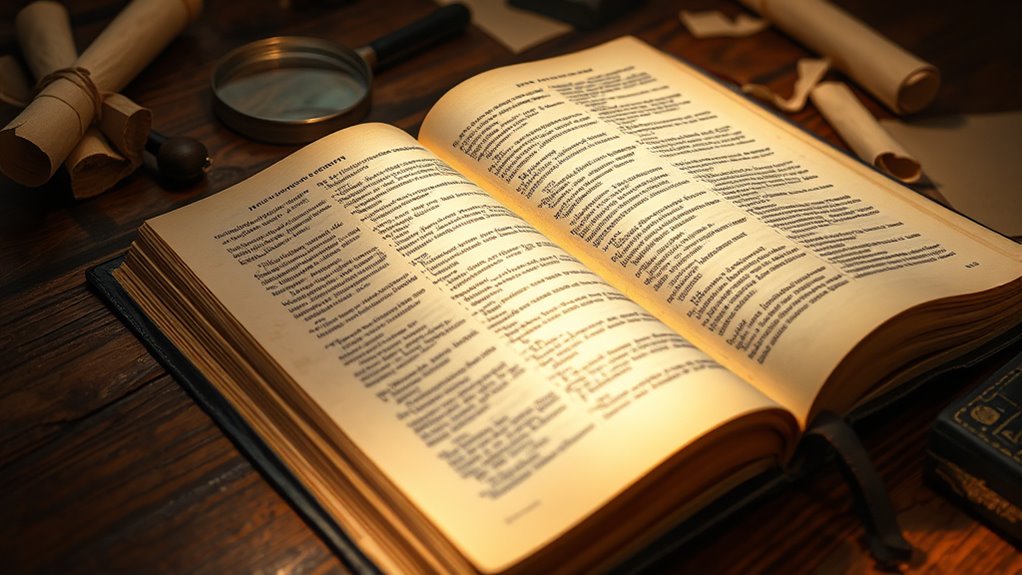
Have you ever wondered how the Bible maintains its message despite apparent differences in accounts? Many see inconsistencies, but a closer literary analysis reveals harmony in purpose. Variations often highlight different perspectives or theological implications rather than contradictions. Consider this table:
| Account A | Account B | Key Difference | Theological Implication |
|---|---|---|---|
| Genesis 1 | Genesis 2 | Sequence of creation | Emphasizes different aspects of God’s nature |
| 1 Samuel 17 | 2 Samuel 21 | Details of Goliath’s death | Reinforces faith in God’s deliverance |
| Matthew 27 | Mark 15 | Details of the women at the tomb | Highlights different eyewitness accounts |
| John 11 | Mark 11 | Jesus’ tears | Shows emotional depth and human compassion |
This demonstrates how apparent contradictions often deepen theological understanding rather than undermine it.
The Impact of Cultural and Literary Traditions

Cultural and literary traditions shape how the Bible was written, transmitted, and interpreted across different communities. Ancient literary traditions and cultural storytelling methods influenced the style, structure, and themes of biblical texts. You can see this in several ways:
- They used poetic devices and parables rooted in their cultural storytelling techniques.
- Oral traditions preserved stories before they were written down, ensuring accuracy over generations.
- Symbolism and metaphor reflected their worldview and religious beliefs.
- Narrative structures often emphasized moral lessons aligned with cultural values.
Understanding these traditions helps you appreciate how the Bible’s message was shaped by its cultural context, making it more than a collection of ancient writings—it’s a reflection of the stories and methods passed down through generations.
Recent Discoveries and Their Implications
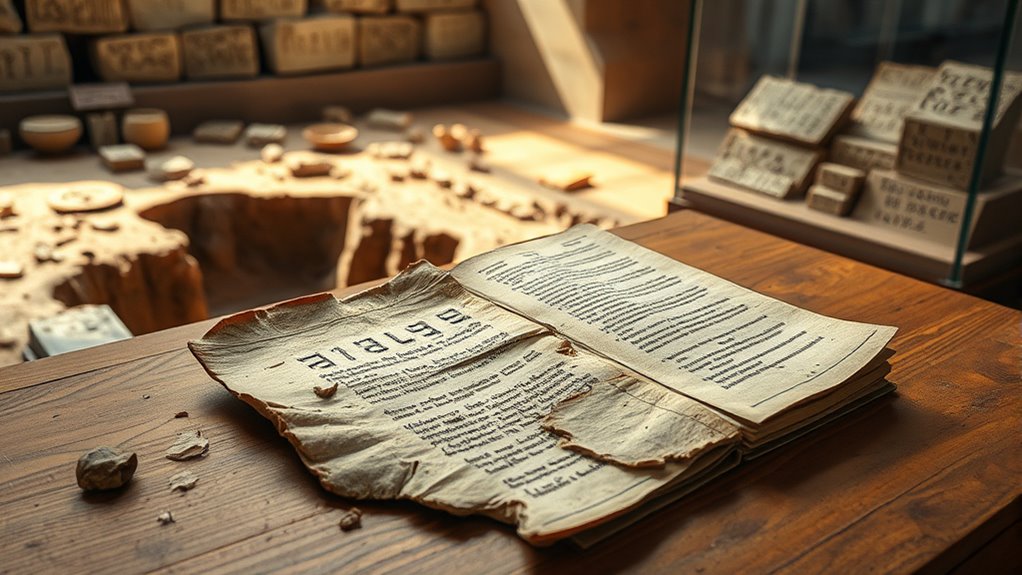
Recent archaeological discoveries continue to shed new light on the historical accuracy of the Bible, often confirming details long debated by scholars. Recent finds of ancient manuscripts, such as the Dead Sea Scrolls, have provided essential textual evidence supporting biblical accounts. These discoveries bolster the reliability of biblical prophecy, showing that many predictions align with historical events confirmed by archaeology. For example, references in ancient manuscripts corroborate details about ancient kings and cities mentioned in Scripture, strengthening its historical credibility. Each new find helps bridge the gap between faith and history, demonstrating that the Bible’s historical claims are backed by tangible evidence. As discoveries continue, they reinforce the idea that the biblical record is more accurate and reliable than many skeptics assume.
Perspectives From Biblical Scholars and Historians

Biblical scholars and historians examine archaeological evidence and textual variations to assess the Bible’s historical accuracy. They consider how discoveries support or challenge the consistency of biblical accounts. Your understanding of these perspectives helps clarify the reliability of biblical texts.
Archaeological Corroboration Evidence
Many biblical scholars and historians look to archaeological findings to assess the historical reliability of the Bible, often seeking tangible evidence that supports or challenges biblical narratives. One key approach is examining ancient inscriptions, which can confirm events or figures mentioned in scripture. Artifact analysis also plays a vital role, helping identify items linked to biblical periods. For example:
- Discoveries of ancient inscriptions referencing King David bolster his historical existence.
- Excavations revealing city ruins like Jericho support biblical accounts of conquest.
- Analyzing artifacts such as pottery and tools helps date biblical events accurately.
- Uncovering inscriptions mentioning biblical figures or locations adds credibility to the narratives.
These findings serve as essential corroboration, linking biblical stories to real historical contexts.
Textual Consistency and Variants
Textual consistency and variants are central to understanding the Bible’s historical reliability, as scholars analyze how different manuscripts and translations compare over time. Variations, known as Textual Variants, arise from copyist errors or intentional changes during Manuscript Preservation. These differences can impact interpretation but also demonstrate careful transmission over centuries. Scholars use the following table to show the significance of these variants:
| Aspect | Explanation |
|---|---|
| Number of Manuscripts | Hundreds of thousands, ensuring accuracy |
| Variants Distribution | Mostly minor, with few significant ones |
While some variants exist, most are insignificant or easily reconcilable, emphasizing the careful Manuscript Preservation that supports the Bible’s overall reliability. This process helps maintain textual integrity despite numerous copies over time.
The Significance of Archaeology in Modern Biblical Studies
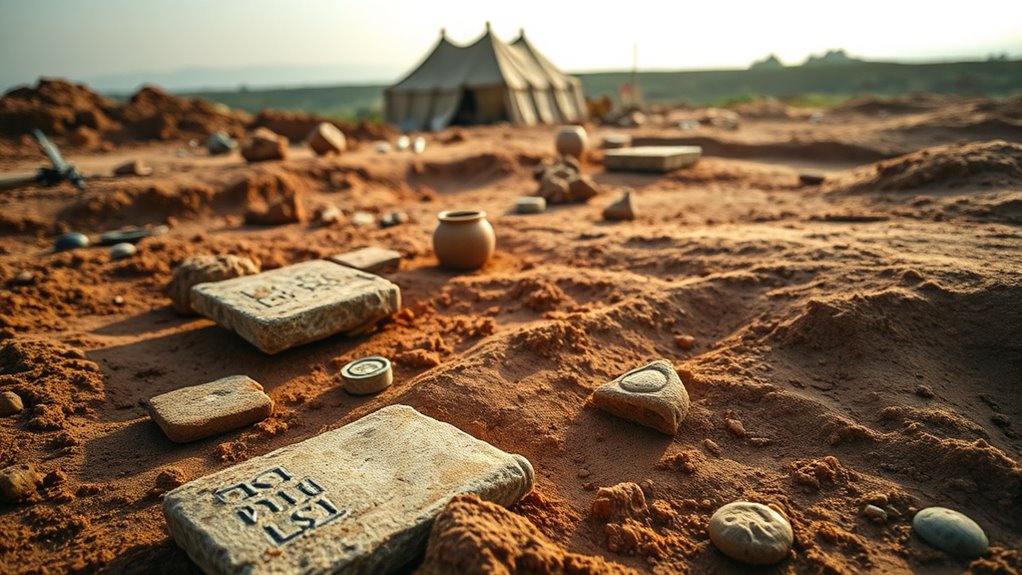
Archaeology plays a crucial role in shaping our understanding of biblical history by providing tangible evidence that supports or challenges traditional narratives. It helps you connect with the past through discoveries like ancient inscriptions and burial sites. These findings can confirm biblical accounts or raise new questions. For example:
- Ancient inscriptions reveal references to biblical figures and events.
- Burial sites uncover practices that align with biblical descriptions.
- Artifacts provide insights into daily life during biblical times.
- Excavations uncover city ruins supporting historical timelines.
Frequently Asked Questions
Can the Bible Be Considered a Completely Accurate Historical Document?
You might wonder if the Bible can be seen as a completely accurate historical document. While it contains some textual variants, these don’t necessarily undermine its core messages. Archaeological evidence often supports biblical accounts, strengthening their historical credibility. However, you should recognize that some details are debated or unclear. Overall, the Bible offers valuable historical insights, but it’s wise to take into account textual variants and archaeological findings when evaluating its accuracy.
How Do Different Translations Affect the Reliability of Biblical Texts?
Did you know over 5,800 Greek manuscripts of the New testament exist? Different translations impact biblical reliability because of translation accuracy and manuscript variations. When you compare versions, you see how small wording differences can alter meaning. These variations show that translation choices influence the text’s clarity and consistency, but scholars carefully analyze these differences to maintain the Bible’s overall reliability, helping you understand its historical and spiritual significance more clearly.
Are There Contradictions Between Biblical Accounts and Scientific Findings?
You might notice that some believe there are textual inconsistencies and archaeological discrepancies between biblical accounts and scientific findings. While science relies on empirical data, the Bible emphasizes spiritual truths and historical events. These differences can lead to questions about accuracy. However, many see these apparent contradictions as opportunities to explore deeper meanings, rather than outright conflicts, encouraging a thoughtful dialogue between faith and science.
What Role Do Cultural Biases Play in Biblical Interpretation?
You should consider how cultural influences shape your understanding of scripture. These interpretative biases can lead you to see certain passages through specific cultural lenses, affecting your interpretation. Recognizing these biases helps you approach the Bible more objectively, acknowledging that cultural context influences how you interpret its messages. Being aware of cultural influences allows you to better grasp diverse perspectives and avoid misinterpretations rooted in your own cultural biases.
How Do Non-Christian Sources Corroborate Biblical Events?
Imagine uncovering ancient inscriptions describing a city mentioned in the Bible. Archaeological discoveries like these support biblical events by providing non-Christian sources that confirm details. For example, inscriptions from ancient civilizations often mention kings and battles aligning with biblical accounts. These findings strengthen the historical reliability of the Bible, showing how non-Christian sources corroborate biblical events and giving you confidence in their authenticity.
Conclusion
While the Bible’s stories have woven through history’s fabric, some details remain gently shrouded in mystery. Archaeology and external sources offer glimpses of truth, yet certain events whisper softly beyond our full reach. Embracing these nuances allows you to appreciate the Bible’s enduring influence, not just as a historical record, but as a guiding light that touches hearts across time. Ultimately, its profound impact invites you to explore with wonder and reverence.

